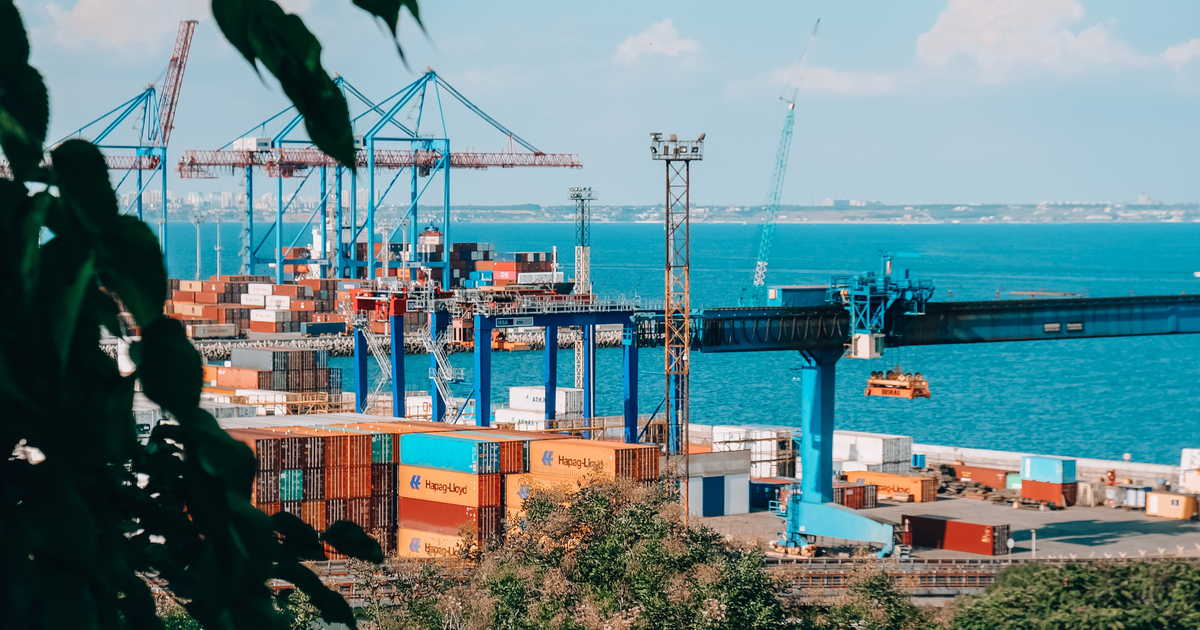
The return of the industry's products exports through seaports will be one of the most important economic and diplomatic victories
Ukraine seeks to expand the export agreement by adding steel products to the list of cargoes sent through seaports. This is an encouraging signal both for the iron and steel industry and for the entire Ukrainian economy. If our negotiators eventually succeed in pressuring international partners and restoring maritime exports of steel products, it will be one of Ukraine’s most important victories on the economic and diplomatic front.
Historically, steel sector is a key sector of Ukraine’s economy. If we review the macroeconomic indicators of the last 20-25 years, we will see a clear correlation between the fall or growth of Ukrainian GDP and the development of industry. In some years, the production of iron and steel accounted for up to 50% of all Ukrainian exports, and in the pre-war year 2021, foreign trade of iron and steel products provided more than a third of foreign exchange earnings to Ukraine ($22 billion) and was comparable to the export of agricultural products.
However, iron and steel industry suffered the most from Russian aggression among the sectors of the economy. We temporarily lost control of a number of powerful enterprises after the occupation of part of Donbas in 2014-2015, and during the full-scale invasion last year, the Russians bombed and captured the steel giants Azovstal and Ilyich Iron and Steel Works in Mariupol, which produced 40% of all Ukrainian steel in 2021.
Since March of 2022, iron and steel enterprises in the controlled territory have been operating at a loss and continue to operate at a loss, revenues are only sufficient to partially cover variable costs. On average, the workload of steel plants fell by 85%, mining enterprises – by 75-80%. As a result, only 6.3 million tons of steel were produced in 2022, or 30% of the figure for 2021, and this is taking into account the peaceful first two months.
There were also signs of economic factors, which are connected with the war. Last year, steel enterprises found themselves in a kind of «scissors»: on the one hand, due to the aggression of the Russian Federation, prices and demand on world markets fell, in particular, the production of dozens of factories in EU countries was temporarily stopped – the only market available to us due to the blocking of ports. On the other hand, the cost of our products increased, including the logistics load increased by 4-5 times.
Among all sectors of the economy, Ukrainian steel industry is most dependent on export opportunities – we sold half of the mining industry’s products and about 80% of steel on foreign markets. Most exports, namely 70%, were sent through sea ports.
The increase in marine exports of iron and steel as a result of the unblocking of ports, according to preliminary and rather cautious estimates, will make it possible to restore the loading of steel enterprises from the current 15% on average to at least 35-45%. It is clear that as long as the war continues and agreements with international partners regarding specific ports and volumes of products, that we will be able to send through them, have not yet been formalized, it is impossible to give more accurate and far-sighted forecasts. The success of trade will also depend on the current price situation in foreign markets at the time of signing the contracts.
Analysts of the GMK Center have estimated that under the current price conditions, Ukraine is underpaid by $420 million every month due to the impossibility of sending iron ore, pig iron, semi-finished products and finished steel products by sea. On an annual basis, this is an additional over $5 billion, the receipt of which in Ukraine will contribute to strengthening the hryvnia and slowing down the growth of consumer prices, as well as strengthening our defense capability.
The social factor is also important – the resumption of production will make it possible to return to enterprises employees who have resigned or gone on forced leave due to lack of work in conditions of significantly slowed production. By the way, most of the temporarily unemployed steelmakers and miners continue to receive salaries and other social benefits from enterprises, partially or in full. Loads will also increase significantly in related industries, in particular in ports and Ukrzaliznytsia. The same positive multiplier effect is expected in replenishment of the budget and growth of Ukrainian GDP. The logic is simple: we export more, therefore, we extract and smelt more, we transship and transport more, accordingly, the state and local budgets receive more taxes and fees.
In the conditions of war, the restoration of maritime iron and steel exports will also have strategic consequences. The fact is that Russian steel sector is the second only after the oil and gas industry, which brings the most income to the economy of the aggressor country. Although international sanctions hit the Russian steel industry, but we must state that they did not knock it out. Pig iron and iron ore of Russian origin, including through third countries, even reach the markets of our allies – the EU countries. Russians lure buyers with significant discounts, and in some cases, I admit, that consumers, ignoring the feeling of disgust, are forced to buy a resource only because they do not have an acceptable alternative. Expanding the presence of Ukrainian steel products and iron ore on the world markets will make it possible to push the Russians, reduce their incomes and weaken the Russian economy, which, obviously, has already been completely transferred to military rails.





